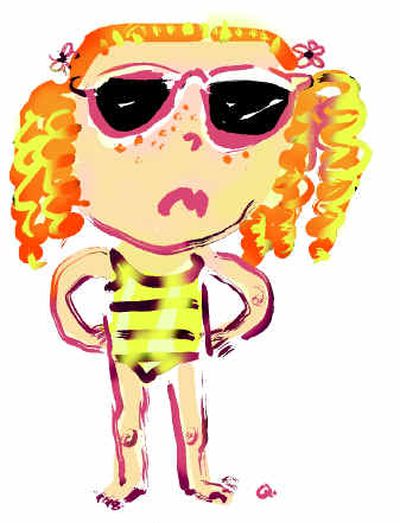Sight savers

By now, most parents have gotten the message that they’ve got to protect their kids from the sun.
So, we drench them in sunscreen with SPF 50, haul the umbrella to the beach, look for the shadiest nook at the park and constantly nag them to wear hats.
But what about their sunglasses?
The consensus among pediatric ophthalmologists is that kids need to protect their eyes the same way they need to protect their skin.
But exactly how much eye protection kids need hasn’t been determined by medical research. There is, however, an established link between sun exposure and adult diseases such as cataracts and macular degeneration.
“A lot of the studies out there have been done on adult populations rather than children,” explains Dr. William Potter, a pediatric ophthalmologist affiliated with Greenwich, Conn., Hospital. “So while we can infer some things from that research, there’s still some question about just how zealous we need to be with our kids.” That uncertainty is complicated by many kids’ resistance to wearing sunglasses, the same way they balk at wearing hats or protective layers of clothing.
“It’s not a simple problem because a lot of kids don’t really like wearing glasses,” says Dr. Leslie Doctor, an ophthalmologist affiliated with Norwalk, Conn., Hospital. “And telling parents their kids must have sunglasses is just another thing to add to a long list of things we already have to do to keep our kids sun safe.” That said, she adds, “We do need to protect our eyes for the very same reason we put sunscreen on. You want to preserve and protect them for the long haul.” You can’t really get a sunburn on your eyes during a typical day at the beach, at least not the way you can on exposed skin, Potter said. “It’s sort of a myth,” he says. “There is no such thing as an eye sunburn. At least not the way you might think of one.”
While studies have never looked at the direct impact of sun exposure on children’s eyes, Potter and Doctor note there is a growing body of evidence that suggests a lifetime of sun exposure may play a role in problems such as cataracts and sight-stealing macular degeneration.
“They are diseases of aging,” says Doctor. “But it just makes sense that we want to minimize exposure over the course of our lives.” You may want to take extra care protecting your children’s eyes if there is a family history of diseases such as cataracts. “All things being equal, if you come from a family background where there have been cataracts, you probably stand a better chance of getting them than the next person,” Potter said. So, it stands to reason that kids in these families are “good candidates for sunglasses at an early age.” If your child resists, don’t sweat it.
“I don’t know how much I want to fight with a kid who is really young about that,” Potter said, adding, kids who don’t want to wear them, “are very good at losing them.” “Your eyes,” he notes, “like most evolved organisms, do a certain amount of adapting to stress.” You may have more luck if your child wears prescription eyewear. Many eyewear manufacturers are now making protective clips that can be snapped onto prescription glasses to add a layer of sun protection. Some, like the clip-ons made by Marchon, come in novelty styles and fun colors such as dark reds, greens and blues.
Potter recommends clips because they tend to be less expensive than a pair of prescription sunglasses. And they are generally cheaper to replace if they get lost.
One strike against clips, he says, is that they make glasses heavier. “Kids have these cute little noses that make it hard to wear glasses in the first place because there’s not that much to hold them on the face,” he says. “If a clip makes them heavier, they can slip and be more uncomfortable.” When buying sunglasses for children, make sure they have a label promising they protect from 100 percent of harmful UVA and UVB radiation.
Probably the best way to ensure sunglasses meet proper protective standards is to look for a label affixed to the lenses stating they meet ANSI (American National Standards Institute) standards, notes Potter.
“And if all else fails, try a baseball cap,” says Doctor, adding that’s her rule when her own kids balk at wearing sunglasses. “It’s better than nothing.”